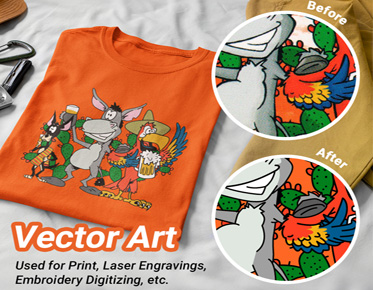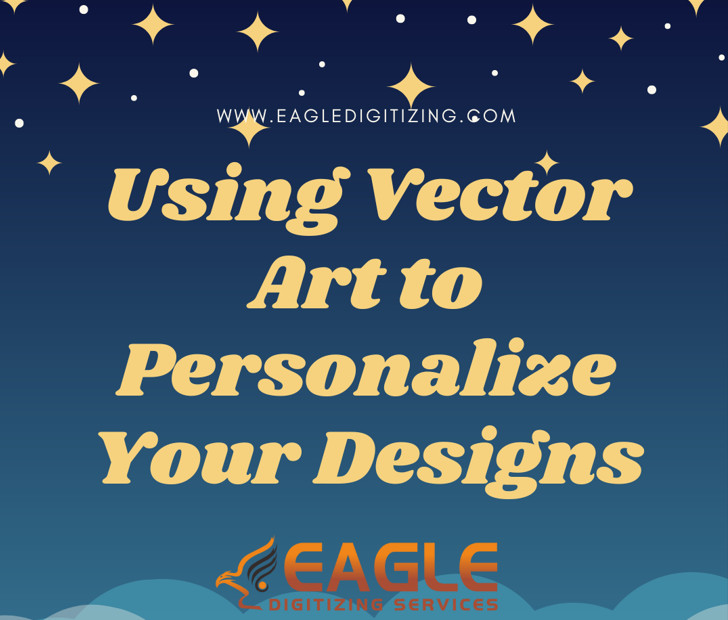How to Use the Image Trace Tool in Adobe Illustrator?
In the realm of digital design, the ability to transform raster images into scalable vector graphics is a valuable skill. Adobe Illustrator, a powerhouse in the graphic design world, offers a potent tool for this task: the Image Trace Tool. Mastering this tool opens up a world of creative possibilities, allowing designers to effortlessly convert images into crisp, editable vectors. In this comprehensive guide, we'll delve into the intricacies of the Image Trace Tool and explore how to wield its power effectively.
Overview
of Adobe Illustrator
Adobe Illustrator stands as the industry standard for vector-based design software. Renowned for its versatility and precision, it empowers designers to create everything from logos to intricate illustrations with ease. Central to its array of features is the Image Trace Tool, which simplifies the process of converting raster images into scalable vectors.
Introduction
to Image Trace
The Image Trace Tool revolutionizes the way designers work with images by automating the vectorization process. By analyzing the pixels of a raster image, it traces the contours and edges, transforming them into editable vector paths. This transformation preserves the integrity of the original image while imbuing it with the flexibility of vectors.
Choosing
the Right Image
Not all images are created equal when it comes to vectorization. For optimal results, select images with clear, distinct shapes and well-defined edges. Simplistic designs and high-contrast photographs tend to yield the best outcomes.
Adjusting
Image Resolution
Before embarking on the vectorization journey, ensure that your image has sufficient resolution. Higher resolutions provide greater detail and clarity, resulting in smoother vector conversions. If needed, resize or enhance the image to achieve the desired resolution.
Locating
the Tool in Adobe Illustrator
The Image Trace Tool resides within Adobe Illustrator's arsenal of tools, readily accessible from the toolbar or the Object menu. Simply navigate to the Window menu and select Image Trace to reveal the panel.
Exploring
Image Trace Panel Options
Upon accessing the Image Trace panel, designers are greeted with a plethora of options to tailor the vectorization process to their specific needs. From presets to advanced settings, each option offers a unique avenue for customization.
Selection
of Presets
Adobe Illustrator provides a selection of predefined presets catering to various image types and artistic styles. These presets serve as a starting point for the vectorization process, streamlining the workflow for designers.
Adjusting
Threshold and Paths
Fine-tuning the threshold and path parameters allows for greater control over the vectorization process. Adjusting the threshold determines the sensitivity of the tracing algorithm while tweaking the paths parameter influences the level of detail in the resulting vectors.
Fine-tuning
Paths and Corners
For intricate images requiring precise detailing, delving into advanced options enables designers to refine the paths and corners of the vectors. By adjusting parameters such as corner angle and path fitting, one can achieve optimal results tailored to the image's complexity.
Setting
Noise and Fills
The presence of noise and unwanted fills can detract from the clarity of vectorized images. Utilizing advanced options, designers can mitigate these issues by specifying noise reduction levels and controlling the handling of fills during the tracing process.
Grayscale
vs. Color Tracing
When vectorizing images, the choice between grayscale and color tracing depends on the desired aesthetic and end use. Grayscale tracing simplifies the vectorization process for monochromatic images, while color tracing preserves the vibrancy and nuances of colored images.
Utilizing
Limited and Full Color
For images rich in color and texture, full-color tracing offers the most faithful representation of the original. Conversely, limited color tracing restricts the color palette, ideal for simplifying complex images or achieving a specific artistic effect.
Sketch
vs. Silhouette Tracing
Adobe Illustrator's presets encompass a spectrum of tracing styles, from sketchy outlines to clean silhouettes. Experimenting with different presets allows designers to explore diverse artistic interpretations and choose the style that best suits their projects.
Line
Art and High Fidelity Tracing
Whether aiming for whimsical line art or high-fidelity reproductions, selecting the appropriate preset sets the tone for the vectorization process. Each preset offers distinct advantages, catering to a range of design requirements and artistic visions.
Refining
Paths with Pen Tool
While the Image Trace Tool automates much of the vectorization process, manual refinement may be necessary for achieving perfection. The Pen Tool empowers designers to fine-tune vector paths, correcting any imperfections and ensuring precision in the traced image.
Cleaning
Up Traced Elements
Occasionally, traced images may contain extraneous elements or imperfections requiring cleanup. Adobe Illustrator provides a suite of tools for this purpose, allowing designers to effortlessly remove unwanted artifacts and polish the final vector output.
Expanding
and Ungrouping Traced Layers
Upon completing the vectorization process, it's essential to expand and ungroup the traced layers for maximum flexibility and editability. This step transforms the traced image into a collection of editable vector paths, ready for further refinement.
Saving
as Scalable Vector Graphic (SVG)
To ensure compatibility and scalability across various platforms and applications, save the vectorized image as a Scalable Vector Graphic (SVG). This universally supported format preserves the integrity of the vectors, allowing for seamless integration into diverse projects.
Saving
Work-in-Progress
Throughout the vectorization process, remember to save incremental versions of your work to safeguard against unexpected mishaps or software crashes. This practice ensures that you can easily revert to previous iterations or track the evolution of your design.
Practicing
with Various Images
Mastery of the Image Trace Tool comes with practice and experimentation. Challenge yourself by vectorizing a diverse range of images, from simple shapes to intricate photographs, honing your skills and expanding your creative repertoire.
Dealing
with Jagged Lines
Jagged lines and artifacts can detract from the quality of vectorized images, especially when dealing with low-resolution source material. To mitigate this issue, increase the image resolution or adjust the tracing parameters for smoother results.
Handling
Complex Images
Complex images pose unique challenges during the vectorization process, often requiring a combination of manual refinement and strategic use of tracing options. Break down complex images into manageable segments and prioritize areas of focus for optimal results.
Printing
Vector Images
Vector graphics excel in print applications due to their scalability and resolution independence. Whether designing posters, flyers, or packaging, vector images ensure crisp, high-quality output regardless of size or format.
Using
Vector Graphics for Web Design
In the digital realm, vector graphics offer unparalleled versatility and performance in web design. From logos and icons to scalable illustrations, vector images enhance the visual appeal and responsiveness of websites, ensuring optimal user experience across devices.
Online
Tutorials and Courses
Expand your knowledge and skills with online tutorials and courses dedicated to Adobe Illustrator and vectorization techniques. Platforms such as Adobe Creative Cloud Learning Hub and LinkedIn Learning offer comprehensive resources for designers of all levels.
Community
Forums and Support
Engage with fellow designers and seek guidance from the vibrant community of Adobe Illustrator users. Online forums such as Adobe Support Community and Reddit's r/AdobeIllustrator provide valuable insights, troubleshooting tips, and peer support.
In conclusion, mastering the Image Trace Tool
in Adobe Illustrator empowers designers, with the assistance of Eagle
Digitizing's vector art conversion services, to
breathe new life into raster images, transforming them into versatile, editable
vectors. By comprehending the intricacies of the vectorization process and
fully leveraging Adobe Illustrator's capabilities, designers can unlock a world
of creative possibilities and elevate their design projects to new heights.
With practice, patience, and a willingness to explore, the journey from image
to vector becomes not just a technical process, but a voyage of artistic
discovery.



